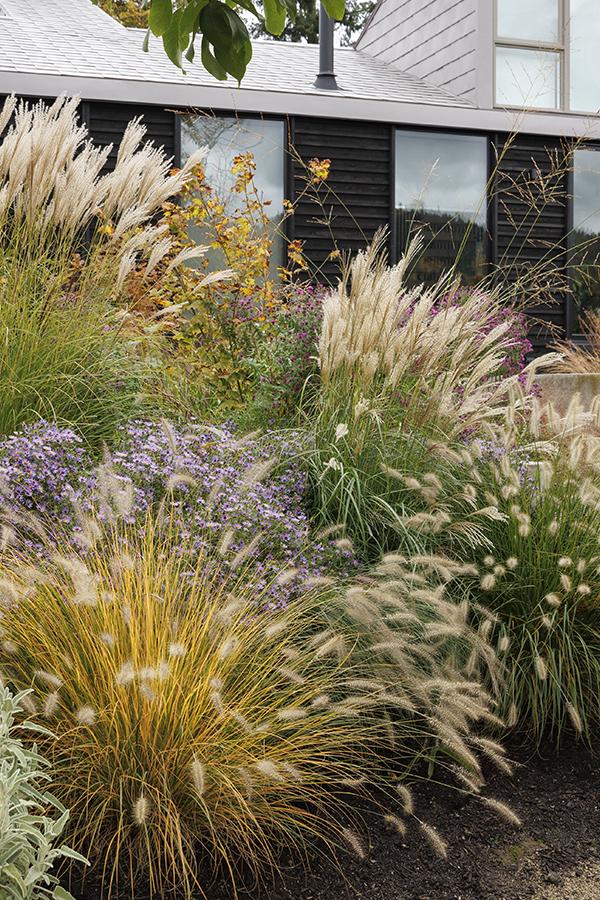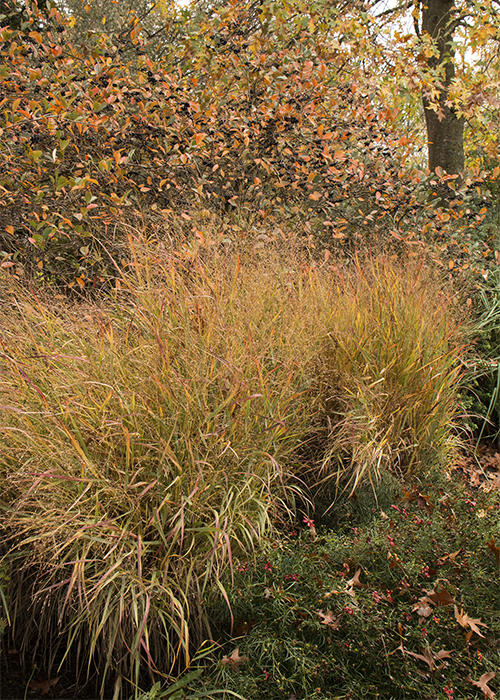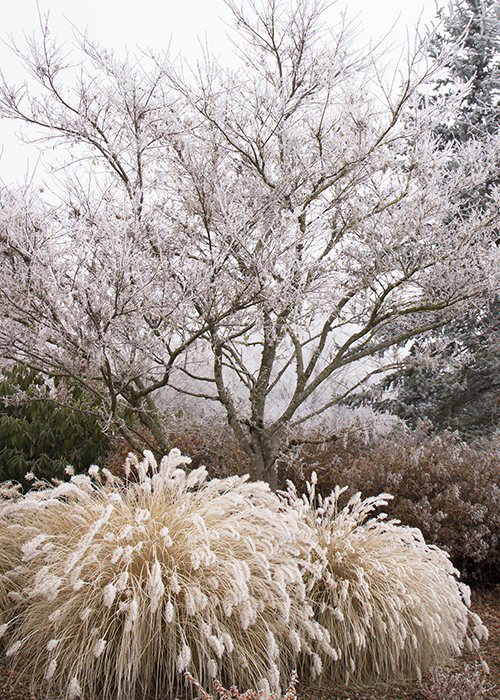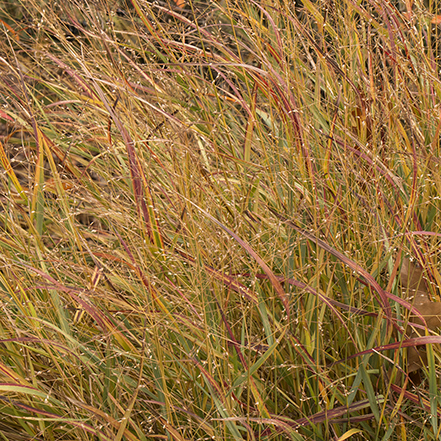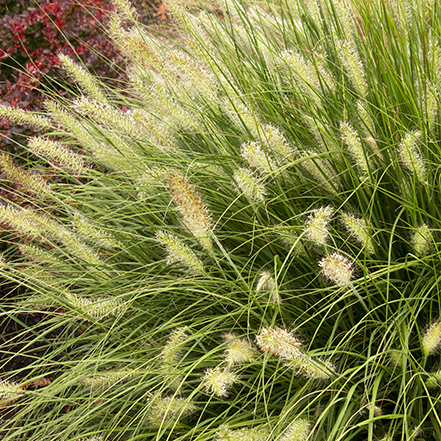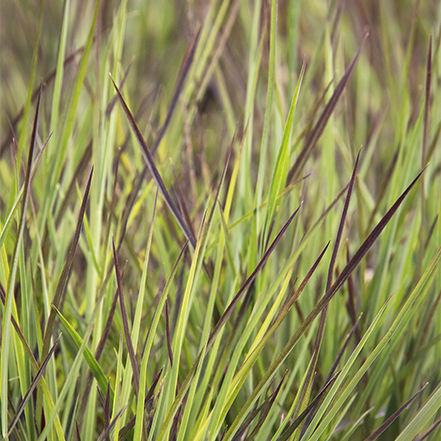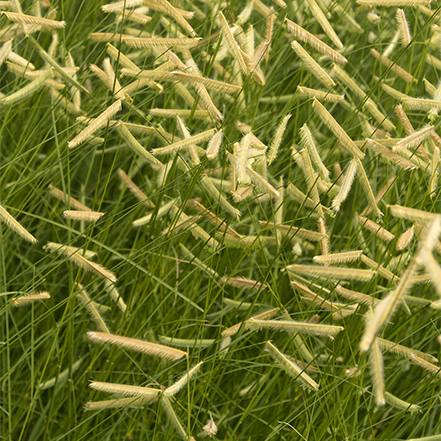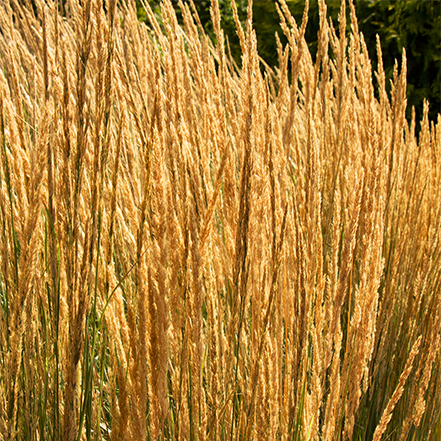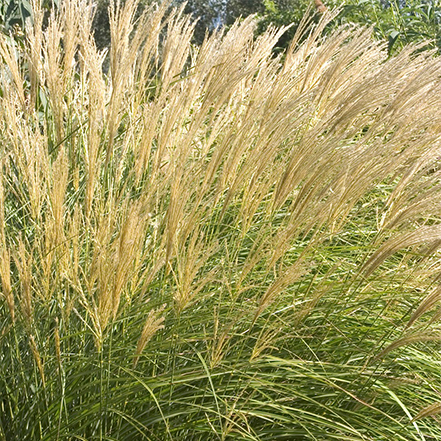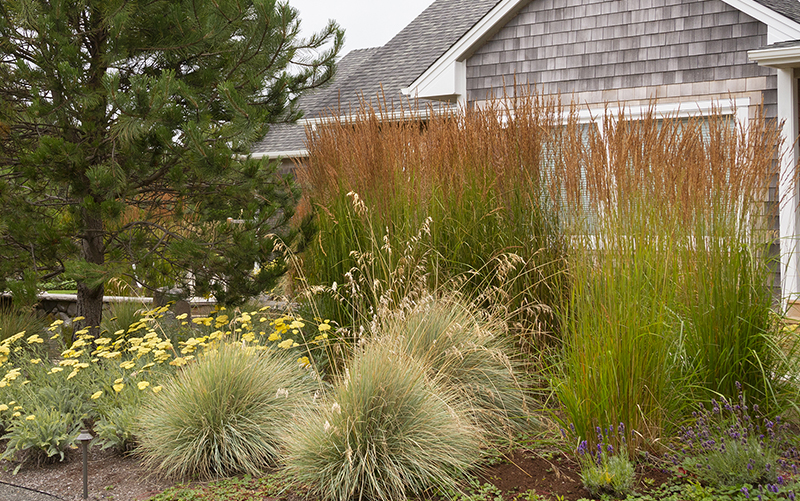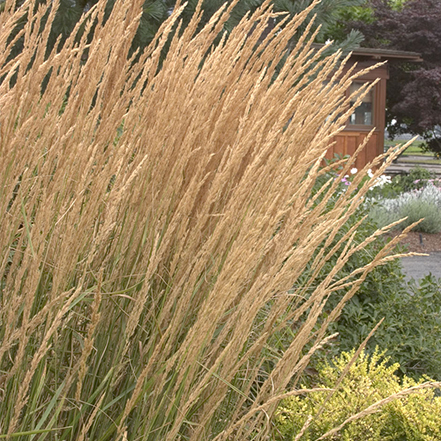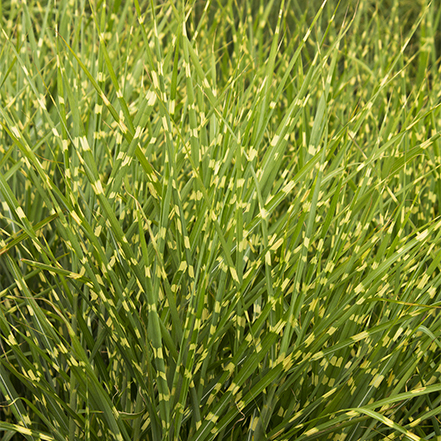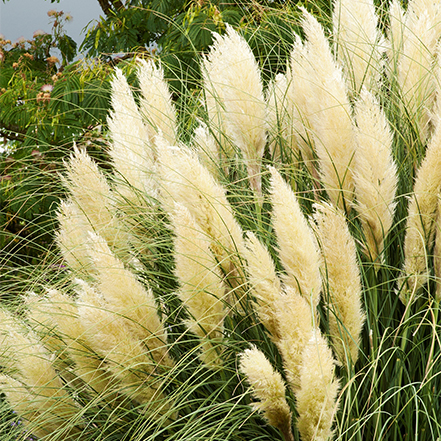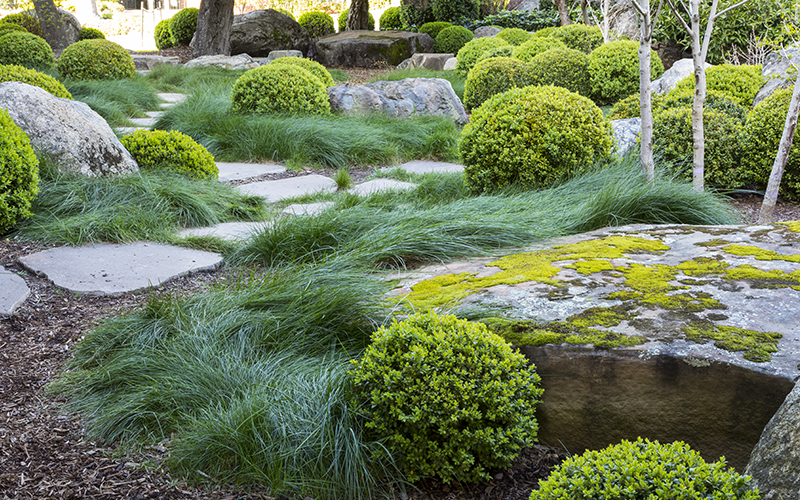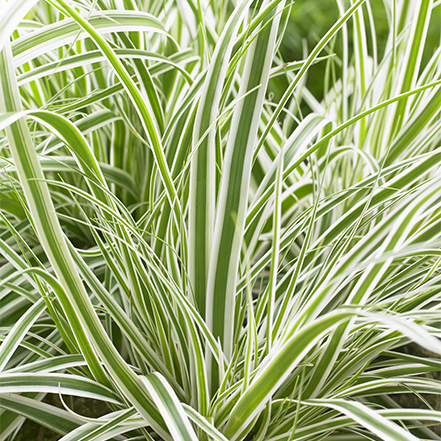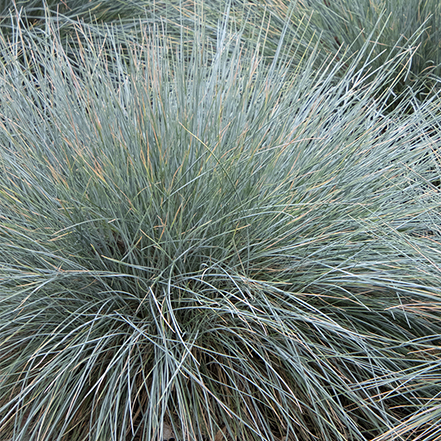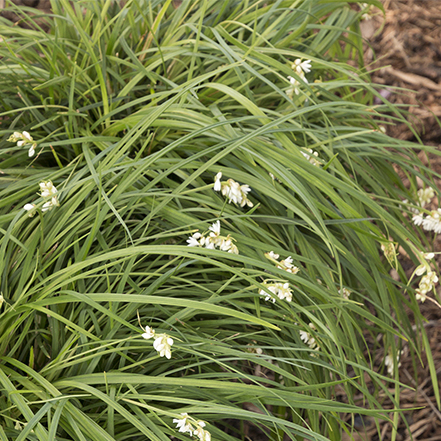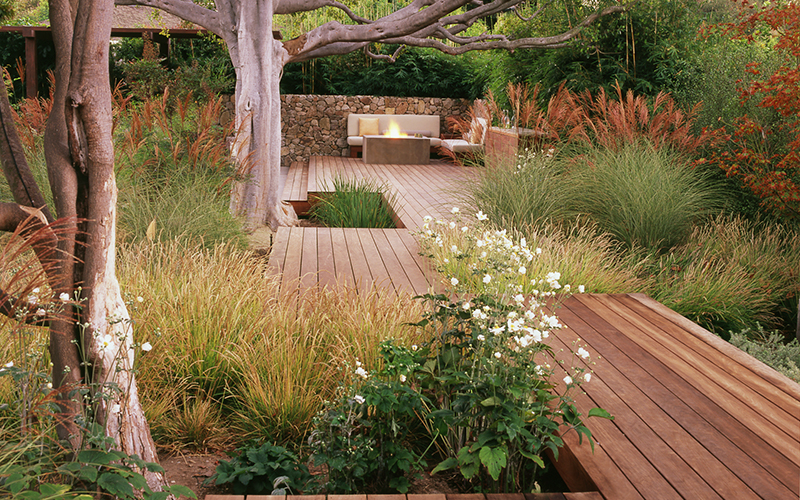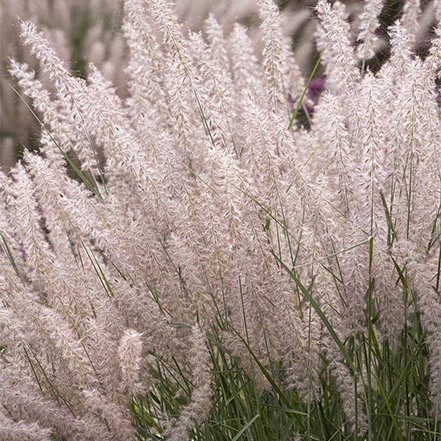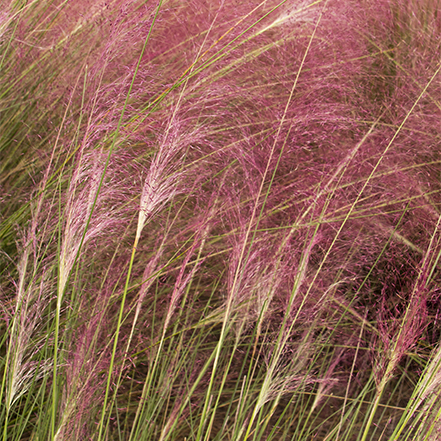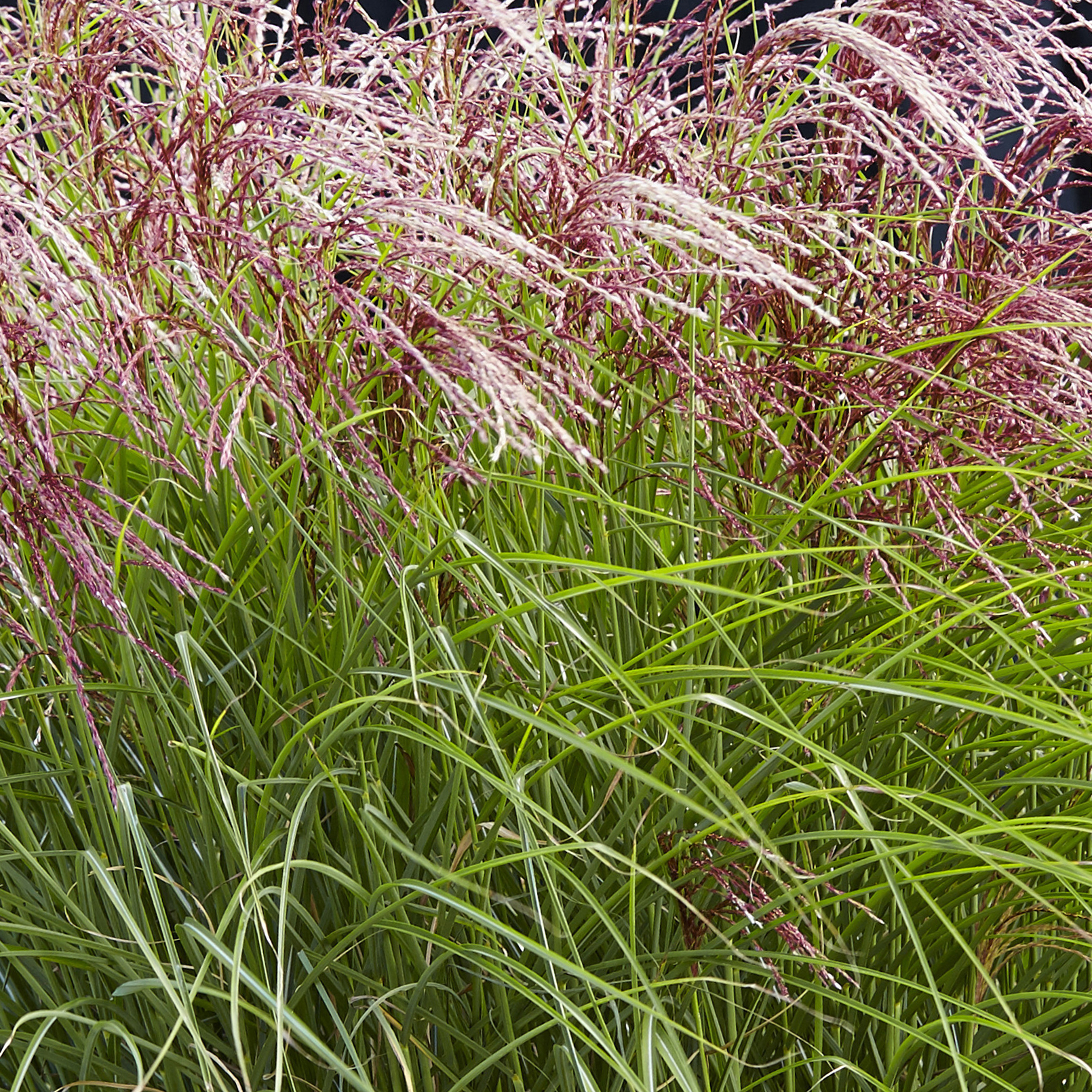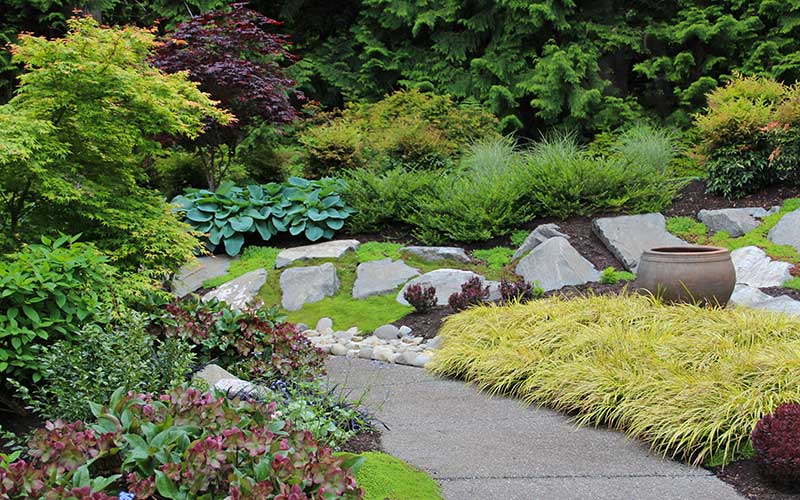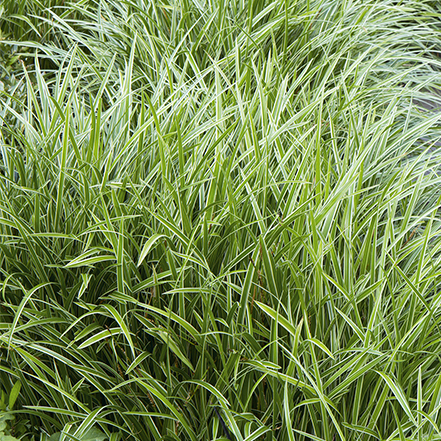Top 5 Ways to Use Ornamental Grasses in Landscape Design
1. Add Year-Round Color and Texture to the Garden
It's easy to love the emerging spring foliage and breezy movement of ornamental grasses. They're a team player in summer as they fade into the background to allow other, more colorful plants to shine. By late summer to early autumn, most of us find that our colorful gardens are fading. This is when ornamental grasses take center stage. When feathery or frothy plumes begin to change color, as does the foliage.
Layer grasses into your beds and borders to keep the show going into fall. We recommend leaving them unpruned to feed and shelter birds through winter. This will also add year-round textural interest until early spring. This is the time when you should prune them back to allow new growth to flourish.
Shenandoah
Switch Grass
Prized for its unmatched foliage color. Green leaves that emerge with red tips in spring, darken through summer, and turn a rich burgundy in fall. Airy reddish pink flowers develop in summer. 4' tall, 3' wide in bloom. Zones 4-9.
Dwarf
Fountain Grass
Fluffy, buff-colored plumes arch above a lush, green fountain of foliage that turns a lovely golden russet color in fall. Up to 3' tall, 2' wide. Zones 4-11.
Blue Heaven
Little Bluestem
Narrow, upright foliage emerges blue, develops pink and burgundy hues in late summer, and turns a rich copper in fall. Tan seed heads persist into fall. Up to 4' tall, 3' wide. Zones 3-10.
Blonde Ambition
Blue Grama Grass
Provides cool-season interest with long-lasting blond seedheads that remain through winter. Up to 3' tall and wide. Zones 4-9.
Overdam Feather
Reed Grass
Reddish-brown summer blooms that turn golden in fall, atop beautiful yellow-margined foliage. Up to 2' tall and wide; bloom stalks reach 6' tall. Zones 4-9.
Adagio
Maiden Grass
Graceful, silvery-green arching foliage becomes a whirl of orange, gold, and burgundy in fall. Reaches up to 5' tall, 3' wide. Zones 6-9.
2. Use Tall Grasses as a Privacy Screen
Naturalistic and meadow-like plantings continue to be a trend (though timeless designs never do go out of style, do they?), which has extended to using taller grasses for hedges and screens. And, why not? They’re fast-growing, many are waterwise once established, and need very little maintenance. Just cut down annually and divide every few years. If year-round privacy is critical, plant something evergreen behind them.
Foerster’s Feather
Reed Grass
Stunning vertical effect of feathery stalks that emerge reddish-brown and turn golden in fall. Reaches up to 6' tall. Zones 4-9.
Porcupine
Grass
Foliage is highlighted by dramatic golden bands and reddish-bronze plumes in summer. Up to 8' tall, 3' wide. Zones 4-9.
Ivory Feathers®
Dwarf Pampas Grass
Prized for its handsome fall flowers, this perennial grass is wind and drought tolerant. It provides a showy windbreak or screen. Up to 5' tall, 6' wide; plumes reach up to 10' tall. Zones 7-11. Not sold in CA.
3. Use Shorter Grasses as Groundcover
Rock gardens, sunny slopes, dry shade, waterwise lawns, fronts of borders, no-fuss pathway edgings. The list goes on for the many beautiful uses of shorter ornamental grasses. For instance, sedge, blue fescue, mondo grass, and other compact grass options. Want something frothy, rather than flat, that’s easy to care for and generally tidy? That's when to use these very useful sorts of grasses. The point here is to let them do their thing. Therefore, plant where they'll be allowed to spill, and put away the edgers and string trimmers.
Above photo by Lisa Romerein, design by Scott Shrader. Read more about this garden here.
EverColor® EverestVariegated Sedge
Forms a compact, easy-care, low mound that is perfect for massing. The ribbon-like foliage has white edges and adds wonderful texture to part sun to full shade spaces. Up to 15" tall, 24" wide. Zones 5-9.
Elijah Blue
Fescue
Exceptionally icy blue coloration holds up even through the heat of summer. Buff-colored plumes create contrast in summer. Perfect for mass planting and edging borders in drought-tolerant landscapes. Up to 1' tall and wide. Zones 4-11.
Taiwan
Mondo Grass
Brought to Monrovia by plant explorer Dan Hinkley. This unique species from Taiwan slowly spreads to form a small, dense patch. This is in part to full shade conditions, making it perfect for planting in tough spots like under trees. Up to 6" tall, 3' wide. Zones 7-9.
4. Plant Grasses "en Masse" to Add Drama
A single ornamental grass as a focal point or planted in a large pot can be stunning in any landscape. However, if you have the space and really want to make an impact, plant them in masses. A sea of grasses is a powerful visual treat and an effective, low-maintenance way of dealing with large areas. Whether it's of different varieties, heights, and textures or a dense grouping of a single variety.
Above photo by Lisa Romerein, design by Rob Steiner. Read more about this garden here.
Karley Rose
Fountain Grass
The showy, super-frothy plumes and deeply arching foliage make this a winner for massing. Up to 5' tall. Zones 5-10.
Regal Mist®
Pink Muhly Grass
Masses of airy pinkish-red flowers are stunning when backlit by the sun. Up to 4' tall, 3' wide. Zones 6-9.
Red Cloud®
Maiden Grass
Mass this lush, easy-to-grow, adaptable grass to add summer color and fall interest to the garden. Up to 4' tall. Zones 6-9.
5. Soften Pathways and Hardscapes with Grasses
Need to take the edge off a retaining wall, light post, water feature, stone pathway, sidewalk, patio, or mailbox? Want to hide an air conditioner or other ugly utility but still keep it accessible? Grasses can soften the impact of these hard materials.
Pay careful attention to the ultimate height and width when using grasses in these applications. You don't want to be fighting with the wrong plant, cutting it back to fit the space.
Above photo and design by Tish Treherne of Bliss Garden Design. Read more about this garden here.
Little Bunny Dwarf
Fountain Grass
The most dwarf of the fountain grasses. It has fluffy, buff-colored blooms that add soft texture. Especially when planted in mass along pathways and other hardscapes. Drought tolerant when established. Up to 12" tall and wide. Zones 4-9.
Golden Variegated
Sweet Flag
A favorite for brightening and softening the edges of retaining walls, pathways, ponds, and more. Golden yellow leaves provide a colorful accent, even in lightly shaded areas. Slowly naturalizes by spreading roots. Up to 10" tall, 6" wide. Zones 5-11.
Ice Dance
Japanese Sedge
Breezy and dense, this sedge makes an exceptional choice massed as cover ground or forming low border against a walkway. Up to 1' tall. Zones 5-9
Cool vs. Warm Season Grasses
Cool season grasses emerge in early spring going dormant in early summer. Warm season grasses grow in summer continuing until a hard freeze. Combine both types for a grassy show of at least six months. Plant cool season types in front of warm season ones. As the early grasses go dormant, they'll reveal the later varieties.
About Invasive Grasses
Some grasses can be invasive in certain regions of the country. It's important to be aware of what's appropriate for your particular area. A grass that can be invasive in one climate can be perfectly acceptable in another climate or region. Monrovia takes its responsibility to protect local ecosystems seriously. We will never ship plants of any kind to regions where they are considered invasive. Consult your local independent garden center for more information.
Get more garden design help with these resources:
- Find your local garden center to ask if they carry the featured plants.
- Sign up for the Grow Beautifully newsletter. You'll get first access to exclusive digital design guides and webinar invites. Plus, receive helpful stories like these delivered straight to your inbox.
- Browse stories with lessons from garden design experts
Free Digital Design Guides:
- Backyard Habitat Guide
- Landscape Style Guide Lookbook
- Simply Beautiful Design Guide
- Plant Palette Color Guide
- Drought-Tolerant Gardening Guide
Webinars:
- Designing for Small Spaces
- Perfect Plant Combos
- Uncovering Your Garden Style
- The Future of Gardening




